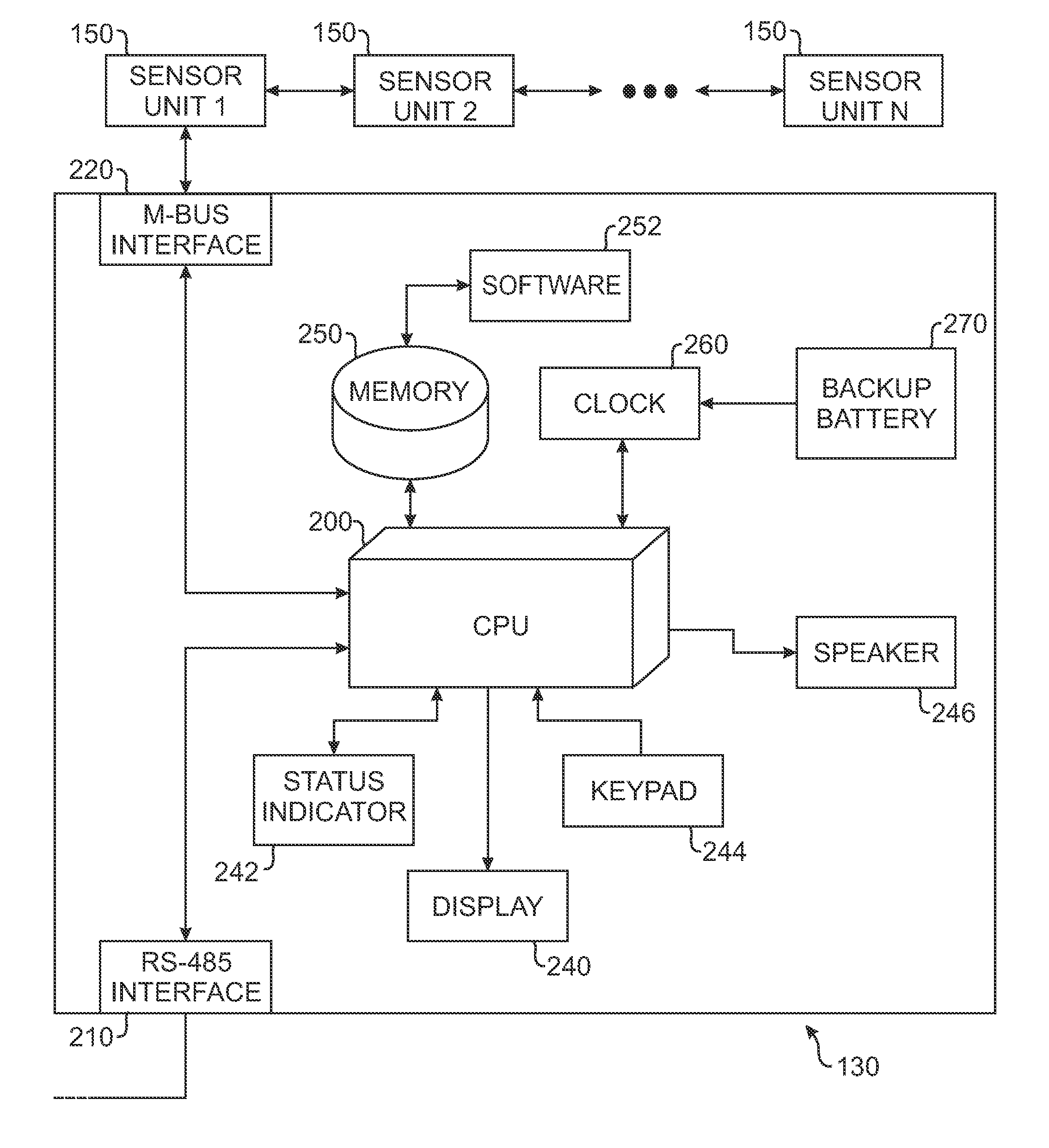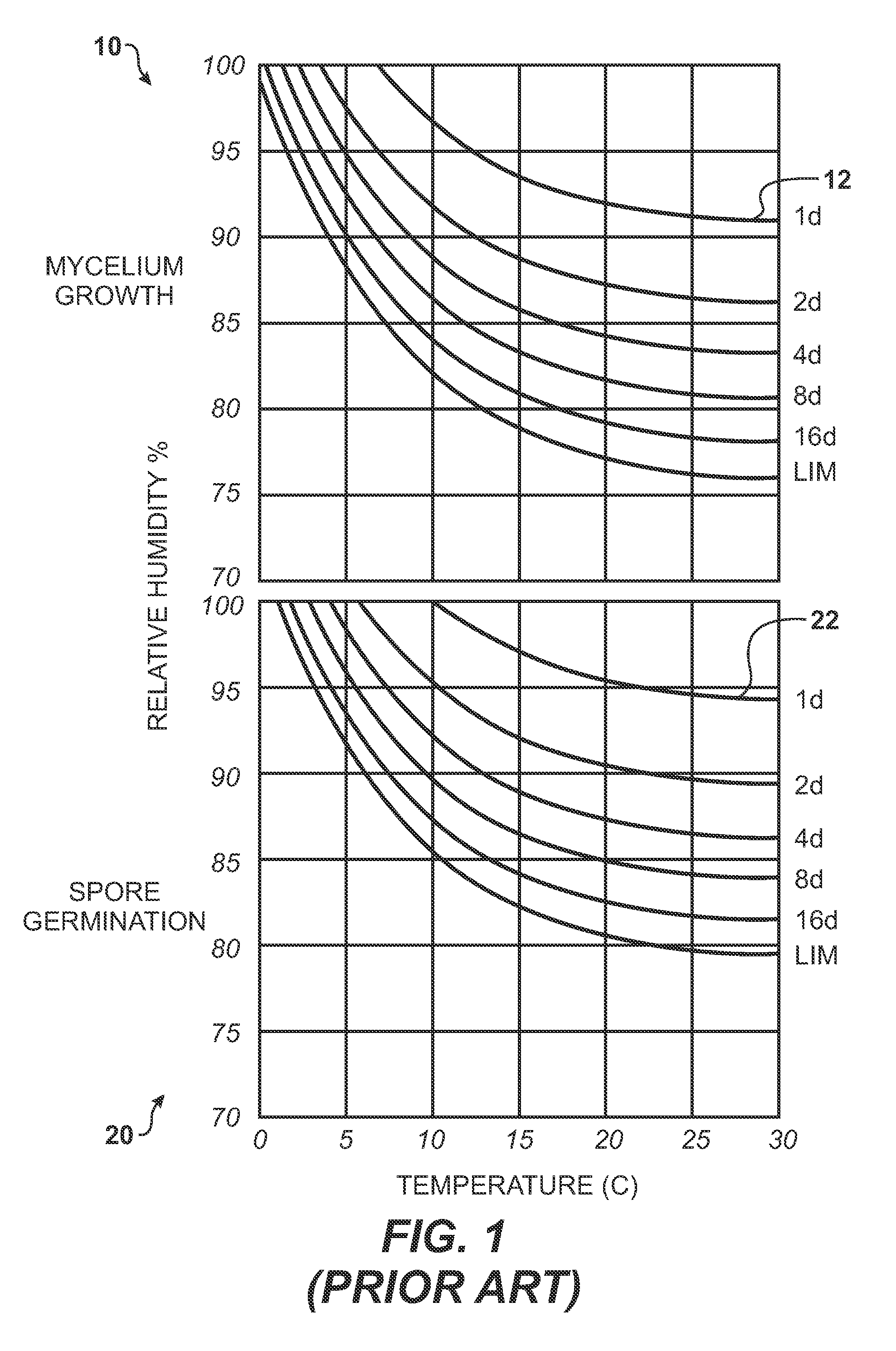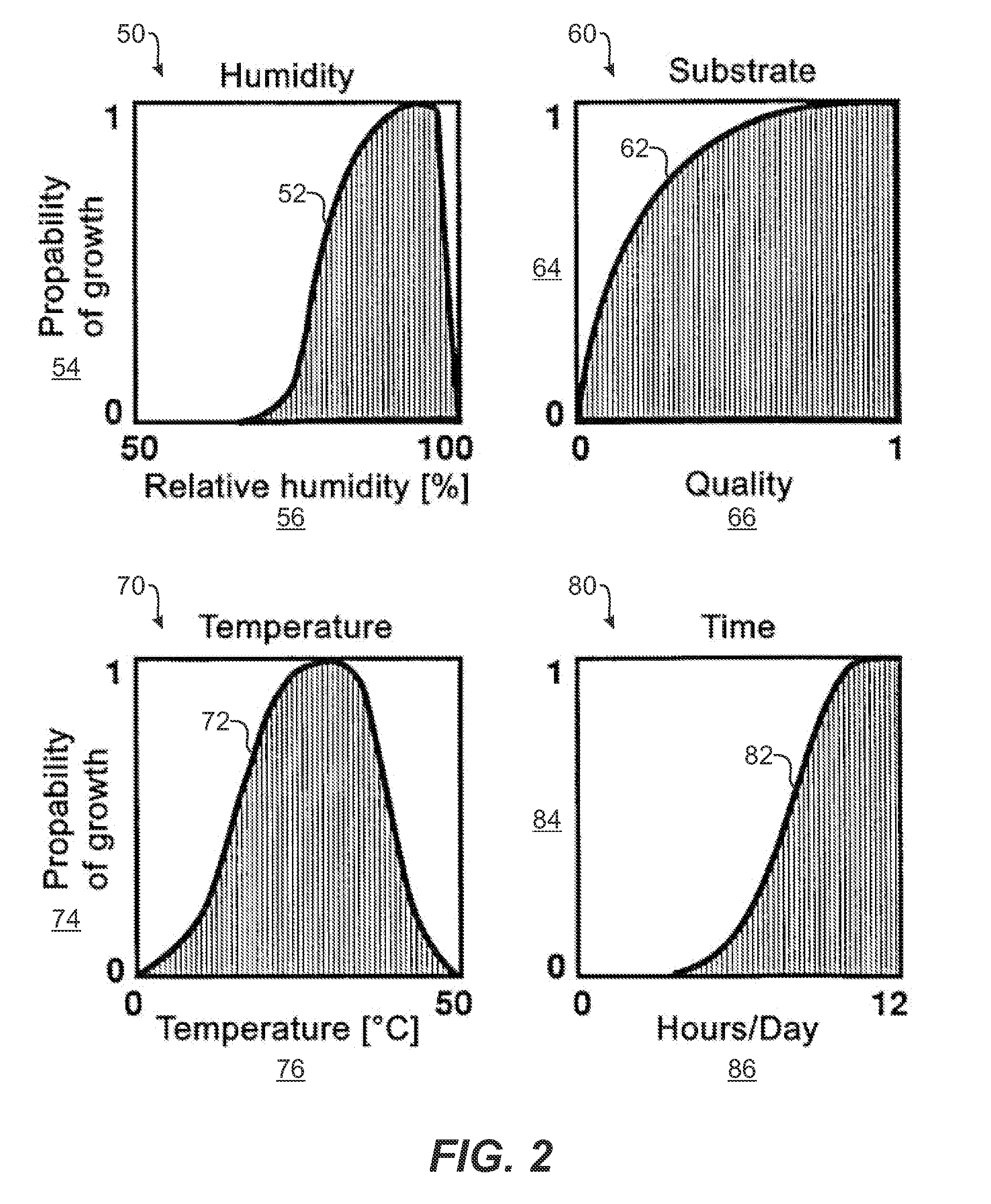System and Method for Predicting Mold Growth in an Environment
- Summary
- Abstract
- Description
- Claims
- Application Information
AI Technical Summary
Benefits of technology
Problems solved by technology
Method used
Image
Examples
Embodiment Construction
[0034] Referring to FIG. 2, graphs schematically show how four conditions (i.e., relative humidity, temperature, quality, and time) that influence mold growth can be used to determine the probability of mold growth. In the humidity graph 50, for example, curve 52 shows how the probability 54 of mold growth corresponds to relative humidity 56. As shown by curve 52, the probability 54 is practically non-existent when the relative humidity 56 is close to fifty-percent, but the probability 54 increases as the relative humidity 56 is closer to one-hundred percent. At a level of relative humidity 56 quite close to one-hundred percent, the probability 52 of mold growth decreases sharply.
[0035] In the substrate graph 60, for example, curve 62 shows how the probability 64 of mold growth corresponds to the quality 66 of the substrate on which the mold grows. The quality 66 of the substrate refers to the quality of the material that the mold can use for nutrients. Typical substrates include c...
PUM
 Login to View More
Login to View More Abstract
Description
Claims
Application Information
 Login to View More
Login to View More - R&D
- Intellectual Property
- Life Sciences
- Materials
- Tech Scout
- Unparalleled Data Quality
- Higher Quality Content
- 60% Fewer Hallucinations
Browse by: Latest US Patents, China's latest patents, Technical Efficacy Thesaurus, Application Domain, Technology Topic, Popular Technical Reports.
© 2025 PatSnap. All rights reserved.Legal|Privacy policy|Modern Slavery Act Transparency Statement|Sitemap|About US| Contact US: help@patsnap.com



